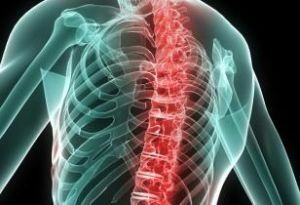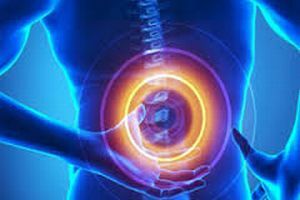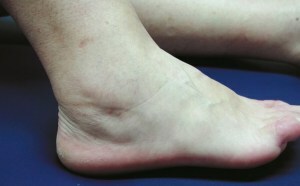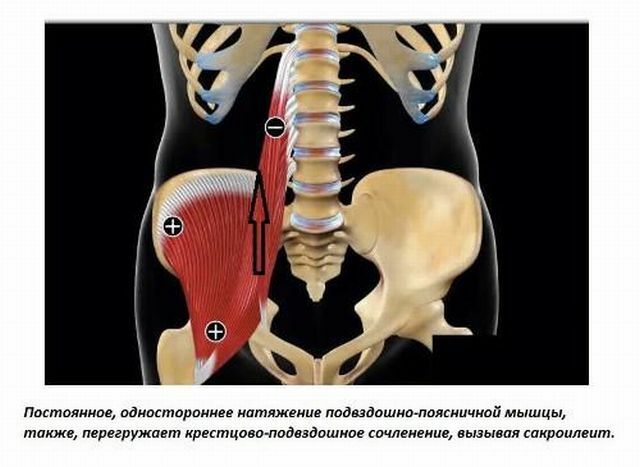 Infectious diseases of the spine occur in a person spontaneously or are the result of secondary infections from other foci of inflammation in the body.
Infectious diseases of the spine occur in a person spontaneously or are the result of secondary infections from other foci of inflammation in the body.
At the moment, this kind of disease appears quite rarely, especially in developed countries.
In most cases, malicious smokers, drug addicts, people with obesity or anorexia, weakened immunity, arthritis, acquired immunodeficiency obtained in the treatment of cancer, and diabetes mellitus are at risk.
One type of infectious disease of the spine is discitis or an infection of disk space.
This is an atypical disease that can develop in people of different age groups, but most often they suffer from patients older than 8 years.
Contents of the article
- The causes of
- The causes of
- Species of the disease
- Characteristic features of the
- Diagnostic possibilities
- Therapy of the disease is an open question
- The rehabilitation period
- Movement and nutrition - this is the strength of the
What causes
So what is spine dysfunction? This development of the inflammatory process in the intervertebral discs, which serve as depreciation during movement.
The main cause of its occurrence is the pathogenic microflora( although scientists are not yet sure of this), which penetrates to the spine:
- With the blood of .Infection enters the spine from the affected organs with diseases of the respiratory and urinary tract.
- As a result of the operation .The fault may be equipment or tools that have not undergone antiseptic treatment, as well as non-compliance with the necessary standards for conducting the operation. Most pathology occurs after lumbar puncture, surgery due to penetrating injury, lumbar discectomy and discography.
Species of the disease
Depending on the characteristics of the disease has several varieties:
- Lumbar .Localization of the disease occurs in the lumbar spine, that is, the pathology does not affect other areas.

- Septic .This is a direct infection in the tissue of the disc. Depending on the nature of the occurrence, hematogenous, postoperative and infectious discitis is isolated. The latter is caused by Staphylococcus aureus.
- Infectious .If the disease is complicated by a fever, chills, a decrease or a complete lack of appetite, sweating, it means that a harmful microflora has appeared in the spinal column, aggravating the inflammation.
- Osteomyelitis .Osteomyelitis is a disease in which bone is destroyed due to the inflammatory process. If the ostiomyelitis is fixed in the spinal column, then its source is infection.
- Spondylodiscite - multiple intervertebral disc damage.
- Idiopathic - its sources are not fully known yet.
Characteristic features of
Severe pain occurring in the back is a characteristic symptom of discitis.
However, if the disease is observed in children, then visually it is difficult to determine, because, despite the pain, they continue an active lifestyle.
In addition, children also do not suffer from systemic diseases, they do not have a fever, and the number of leukocytes in the blood remains in a stable state. Nevertheless, the presence of infection can be determined from the rate of erythrocyte sedimentation.
Symptoms vary depending on the type of disease, but there are signs that are inherent in each of them:
- Fever and chills at the initial stage.
- The development and spread of infection causes pain ;first moderate, and then progressing during any activity. Often, uncomfortable sensations can be irradiated, that is, to give even to other parts of the body: the abdomen, thighs, perineum, shin and hip joint.
- Spasms next to the near-vertebral muscle fibers of , which lead to a restriction of motor activity.
- If the infection has passed to the spinal canal, the spinal cord may be squeezed and the inflammation of the nerve root may develop. In this case, , the following symptoms of occur: muscle weakness, numbness, urination disorder, tingling.
- Radical syndrome : signs of irritation( acute pain or decrease( partial loss) of sensitivity), reduction or loss of reflexes, and others.
Diagnostic features of
Diagnosis of pathology depends on the quality of the visualization.
For the image of the spine, studies are being carried out:
- using the X-ray equipment , which reveals narrowing of the disk space and destruction of the end plates of adjacent vertebrae;
- Magnetic Resonance Imaging( MRI) is required to determine the size of the edema and evaluate its spread to other organs and tissues;
- CT diagnoses the size of the lesion, not fixed by other clinical methods.
Additionally, the patient is taken a blood test to check the amount of white and red blood cells.
Therapy of the disease - an open question
The therapeutic tactics at the discourse are still a subject for discussion.
The classic methods are:
- Immobilization of , that is, restoration of the anatomical structure due to fixation of the spine( approximately 14 days and
 more).For this, either an 8-shaped tire or a hard corset is used, in other cases - a plastic waistcoat with the condition of strict bed rest. The immobilization method does not have a definitive result, but quickly copes with severe pain, and, therefore, restores activity.
more).For this, either an 8-shaped tire or a hard corset is used, in other cases - a plastic waistcoat with the condition of strict bed rest. The immobilization method does not have a definitive result, but quickly copes with severe pain, and, therefore, restores activity. - Antibiotics .Previously, doctors believed that the use of drugs does not make sense, since the main symptom is discomfort, disappear regardless of their use. However, in modern medicine, antibiotics are used in any case after sowing. He also gives a conclusion, what kind of medicine to use - a wide or narrow spectrum of action.
- Surgical treatment - treatment of the affected part with the removal of infected parts or anterior discectomy. The operation is advisable if the diagnosis is unclear, and there are suspicions of a tumor;decompression of the nerve structures or drainage of the abscess;in the absence of stabilization of the spine.
Rehabilitation period
Complications of treatment are very rare. These include chronic back pain, which can be exacerbated by heavy physical activities and sports, and neck pain associated with prolonged use of drugs.
The last complication disappears after the termination of the course.
Movement and nutrition - this is the strength of
In order to prevent spine diseases, including discitis, it is necessary to provide sufficient motor activity, perform daily exercises for back from the complex of therapeutic gymnastics, increase in your diet products rich in mineralsand vitamins, avoid supercooling of the body and normalize physical activity.
 Disease with timely and quality treatment always has a favorable prognosis.
Disease with timely and quality treatment always has a favorable prognosis.
Patients are assigned combined rehabilitation, which includes taking medications, resting and rarely - surgical intervention.
Only 15% of those treated had neurological damage, which was chronic, but none of them was fatal.



